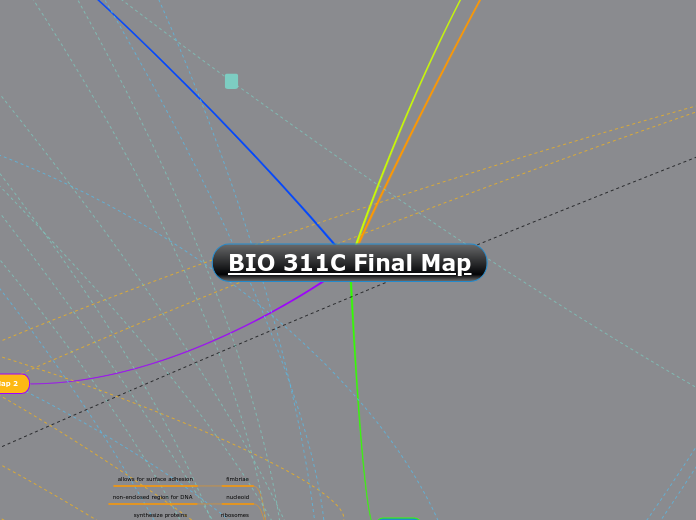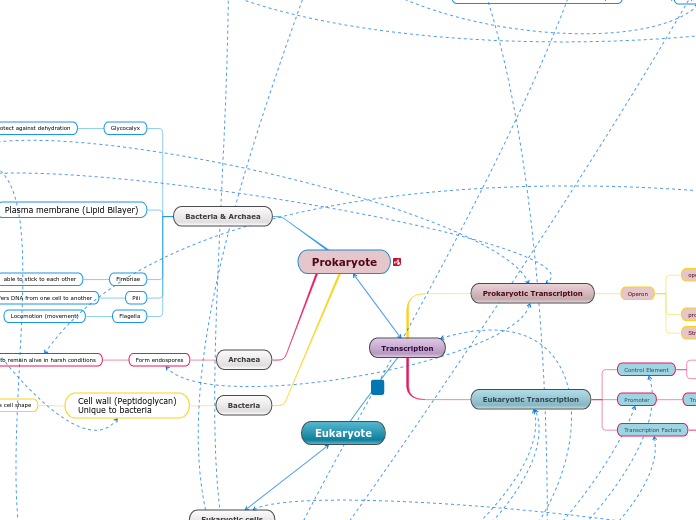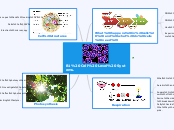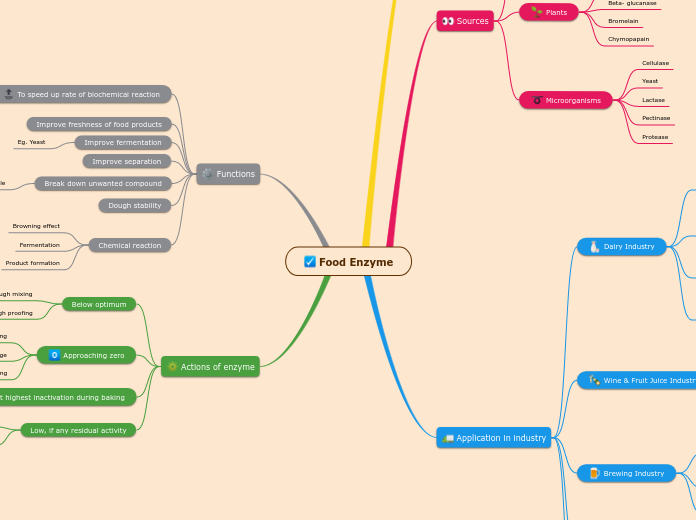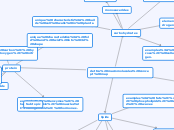Cell Structures and Functions
Phospholipids in Membranes
Membranes
Phospholipid Bi-layer
Membrane fluidity
Unsaturated Fat
More fluid membrane
Saturated Fat
Less fluid membrane
Filter unwanted particles
Hydrophilic heads and hydrophobic tails
Modes of Transportation
Passive Transport
No energy required
High to low concentration
Osmosis
Facilitated Diffusion
Diffusion
Active Transport
Energy required
Low to high concentration
Protein structures
Different levels
Electrostatic interactions/disulfide bridges
Secondary structure
Hydrogen bonds
Primary structure
Covalent peptide bonds
R-group Orientation
Interactions between R groups
Forms protein structures
Quaternary structure
Tertiary structure
Disulfide bond
The only covalent bond
Four different groups
Acidic
Ionic bonding
Negatively charged
Basic
Positively charged
Hydrophilic
Non-Polar
Van der waals forces
All contain nonpolar covalent bonds
Hydrophobic
Contains – H, CH or a carbon ring
Polar
Hydrogen bonding
All contain polar covalent bonds
Contains – OH, SH or NH groups
Tryptophan can function
Side Chain
Electrically charged on basic and acidic groups
Part of an amino acid
Eukaryotic Cells
Plant
plasmodesmata
connects cytoplasms
chloroplast
photosynthetic organelle
cell shape and protection
central vacuole
storage and hydrolysis
BOTH
nucleus
contains genetic material
cytoskeleton
support shape
smooth er
rough er
produce proteins
mitochondrion
regulates cellular respiration & produces majority of ATP
peroxisome
metabolic functions
golgi apparatus
secretion of cell products & active in synthesis
cytoplasm
gel-like substance; contains cell consistency
flagellum
allows for movement
Animal
lysosome
makes macromolecules
centrosome
site for initiation of microtubules
Prokaryotic Cells
bacterial chromosome
single, coiled chromosome
flagella
allows locomotion of organelles
glycocalyx
capsule or slime layer outer coating
cell wall
rigid wall; provides structure
plasma membrane
structure; enclose
ribosomes
synthesize proteins
nucleoid
non-enclosed region for DNA
fimbriae
allows for surface adhesion
BIO 311C Final Map
Map 2
Cell Communications
Transduction Using cAMP
cAMP
Synthesized using the enzyme Adenylyl Cyclase
Once used for the relay, cAMP is
converted into AMP by an enzyme
called phosphodiesterase
Formed from ATP
cyclic AMP
Second messenger
Used in signal transduction to
relay a signal within the cell
Small, nonprotein, water-soluble molecules or ions
Transduction
Multi-step pathway that
helps amplify a signal
More regulation
More coordination
Subtopic
Processes cells use to make ATP
Cellular Respiration
Oxidative phosphorylation
Location-
Inner mitochondrial membrane
Input-
O2
2 FADH2
10 NADH
Output-
H2O
28 ATP
Net-
H2O
28 ATP
Electron transport chain and chemiosmosis-
ATP made
Krebs Cycle / Citric Acid
Cycle
Input-
2 CoA
Output-
6 NADH
2 FADH2
2 ATP
Net-
6 NADH
2 FADH2
2 ATP
Substrate level oxidation-
ATP made
Pyruvate oxidation
Location-
Matrix of the mitochondria
Input-
2 Pyruvate
Output-
2 CoA
2 NADH
Net-
2 CoA
2 NADH
NO Substrate level oxidation-
ATP not made
Glycolysis
Location-
Cytoplasm/cytosol of the cell
Input-
2 ATP
1 Glucose
Output-
4 ATP
2 NADH
2 pyruvate
Net-
2 pyruvate
2 ATP
2 NADH
Substrate level oxidation-
ATP made
Pathway of Signaling
Membrane receptors
Tyrosine Kinase Receptor
Polypeptides function as a Kinase
Kinase adds phosphates to other kinase through ATP
Tyrosine Kinase Receptor is activated
G Protein Coupled Receptor
Signal molecule and GDP = Inactive
G-Protein alters shape, so GTP can bind to it
Enzyme is activated at reception
Now active, G-protein can activate enzyme (Adenylyl Cyclase)
Map 3
Transcription and Translation
Transcription
RNA polymerase
binds to promoter
enzyme
Initiation
polymerase unravels DNA
(downstream)
RNA polymerase crosses
termination sequence
uses RNA Polymerase II
(first needs to be binded by transcription factors)
when exits nucleus, must
keep mRNA stable
CAP and TAIL
takes place in nucleus
pre-mRNA
RNA processing:
- removes introns
- joins exons
DISTINCTIONS
don't have introns; thus, when exiting,
doesn't have to keep mRNA stable
no nucleus, transcription
takes place in cytoplasm
Translation
Stages
Termination
release factor
Elongation
translocation
peptide bond formation
codon recognition
Initation
1st amino acid attached to tRNA
mRNA and tRNA
Ribosomes
facilitates coupling between tRNA and mRNA
proteins
rRNA
ribosomal RNA
tRNA
amino acid attachment site
anticodon
binds the tRNA to mRNA
three amino acids
80 nucleotides long
transfer RNA
mRNA
codons
three nucleotides code for amino acid
genetic code
nucleotides
messenger RNA
Steps
match tRNA anticodon with mRNA codon
match tRNA and amino acid
enzyme aminoacyl-tRNA synthetase
Pathways
Secretory pathway (Polypeptide synthesis)
Examples of secreted proteins
Serum proteins
– Albumin
Extracellular matrix proteins
– Collagen
Milk proteins
– Casein
Peptide hormones
– Insulin
Digestive enzymes
– Amylase
1-Begins on free ribosome
2-SRP binds to signal peptide
This pauses snythesis
3-SPR binds to receptor protein
4-SPR leaves, synthesis continues
Simultaneous translocation starts synthesis
5-Signal peptide cleaved by enzyme
6-Finished polypeptide leaves ribosome
7-Folds into final conformation
Endomembrane system
1-Free ribosomes enters Rough ER
Proteins fold and undergo modifications
Addition of carbohydrate side chains
2-Modified proteins in vesicles -> Golgi apparatus
They undergo further modifications
Phosphate groups attached as tags
Short chains of sugar molecules added/removed
3-Finalized vesicles transports to lysosome
4-Exocytosis occurs, protein exits cell
Other Destinations
Cytoplasm
Translation takes place here
Organelles start in cytosol
Nucleus
Synthesizes the ribosome’s components
Holds the cell’s genetic material
Regulate nuclear transportation
Separates its contents from the cytoplasm
Peroxisome
Breakdown fatty acids through beta oxidation
Chloroplast
Carries out photosynthesis
Sensors of the external environment
Secondary metabolites
Lipids
Vitamins
Hormones
Amino acids
Produces various metabolites
Mitochondria
Convert energy for cellular respiration
DNA
Bonds present
Hydrogen bonds connect purines and pyrimidines
Phosphodiester bond connects each nucleotide
Monomer that makes DNA/RNA
Nucleotides
Components
Double stranded with complementary base pairing
Antiparallel
Structure
DNA strand
Chargaff's rule
Pyrimidines
T and C
Purines
A and G
G=C
A=T
Nitrogenous bases
Cytosine
Thymine
Adenine
Guanine
Sugar-phosphate backbone
Pentose (five-carbon) sugar (ribose)
Map 1
Map 4
Gene Regulation
Regulation through Operons
Transcription Factors
(instead of operons)
repressors
activators
operons do not occur in eukaryotic cells
- made in mRNA w/ individual promoter
enhancers
bind activator proteins
activator bound to receptor is brought
to promoter via DNA bending proteins
transcription increased via
RNA polymerase II
basal (general) expression
specific to eukaryotes
(ex. humans)
Activators/Repressors involvement in regulation of gene expression
Operons
Helps with regulation with an on-off switch
"Switch"
Negative regulation
Postive regulation
Segment of DNA known as an "operator"
Positioned within promoter
Proteins bind to operators to turn on gene expression for multiple genes
OR to turn off expression
Eukaryotes
Transcription factors
Control elements in DNA
Distal
Bind to specific transcription factors
Can be close or far from gene they are controlling
Sequences in DNA upstream or downstream of gene
Enhancers
Proximal
Bind general transcription factors
Sequences in DNA close to promoter
Specific
Bind to distal control elements called enhancers
Present near or far from gene they are controlling
Change levels of transcription
High levels of transcription are reduced by repressors
Increase levels of transcription
Done by activators
General
Bind to promoter and regions near
Low levels of transcriptions
Background/basal
Proteins that help turn specific genes "on" or "off"
Help increase or decrease level of transcription
Prokaryotes
Regulation Through Operons
Lac Operon
Lactose present, glucose present (cAMP level low)
Presence of Glucose operon OFF
Blocks Adenylyl Cyclase
Prevents production of cAMP
CAP cannot be activated
CAP can't help RNAP to bind promoter
Little lac mRNA synthesized
Lactose present, repressor inactive, operon on
mRNA translates= B-Galactosidase, Permease, Transacetylase
Takes in more Lactose from outside
Break it down to glucose and galactose
Uses sugars as needed
All structural genes are transcribed
Forms a long mRNA
No glucose= operon ON
Inducible operon
Lactose present, glucose scarce (cAMP level high)
Activator protein CAP is activated by cAMP
CAP helps RNAP to bind promoter
Facilitates transcription
Operon ON: Induced/ high expression
Abundant lac mRNA synthesized
Lactose absent, repressor active, operon off
Negative regulation of operon
Transcription of structural genes is blocked
Lac= Lactose
Inducer of the lac operon
Disaccharide made of glucose and galactose
Example of negative and positive regulation
Regulation needs both repressor and operator
Negative regulation= gene expression OFF
Without repressor, transcription occurs
With repressor, no transcription occurs
Repressor protein bond to operator sequence
Positive regulation= gene expression ON
Without activator, no transcription occurs
With activator, transcription occurs
expression at high level
Occurs at level of transcription
Gene Organization
Regulatory regions
Operator
Turn off gene expression
Turn on gene expression
Location where protein binds
The binding causes positive/negative regulation
Proteins are called activators/repressors
“Switch” is a segment of DNA
Promoter
Occurs structural and regulatory gene/s
Regulatory gene
Lac I
Codes for repressor protein
Structural genes
Genes whose expression is controlled together
Lac Z
Structural Gene for B-Galactosidase
Lac Y
Structural Gene for B-Galactoside permease
Lac A
Structural Gene for B-Galactoside transacetylase
Activators/Repressors are
Activated/Made
Far Away from the Gene
Activators bind to mediator proteins
Brings the activator closer to
the promotion site
DNA bending brings activator
closer to promotion site
Activator binds to enhancer
Specific Transcription Factor
Turns gene regulation on or off
Last gene that enters the nucleus
Negative Regulation
Operon Gene Regulation Off
Repressor
Positive Regulation
Operon Gene Regulation On
Activator
Binds to operator
Protein
Main topic
